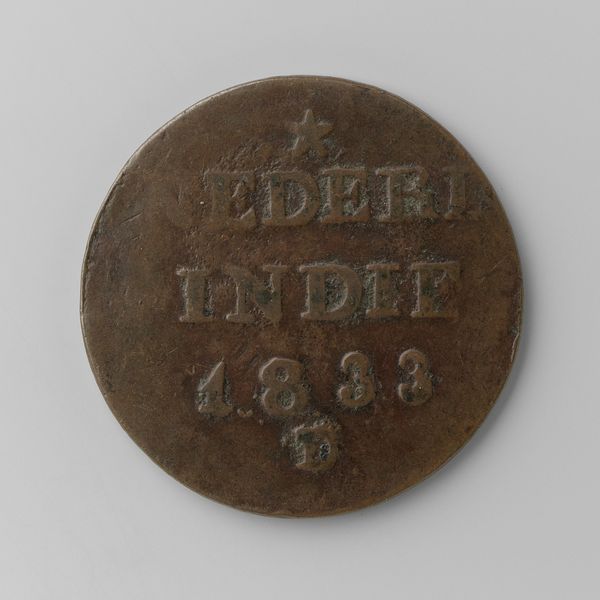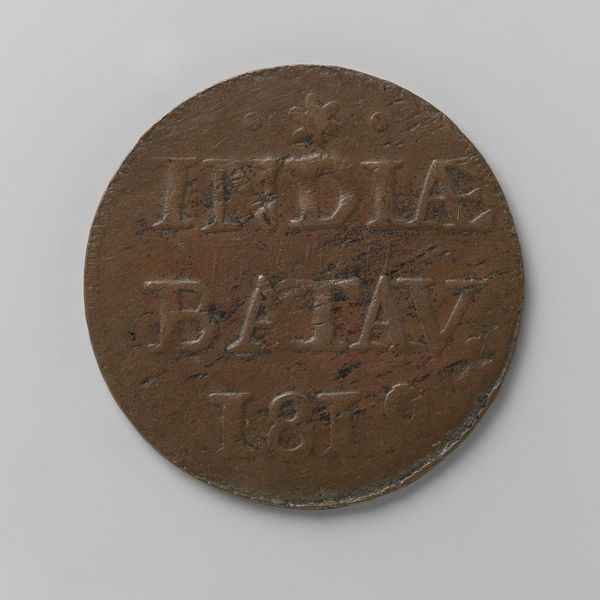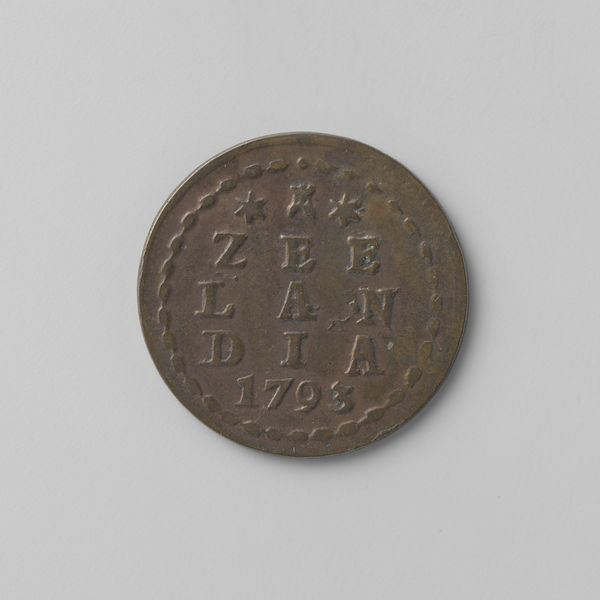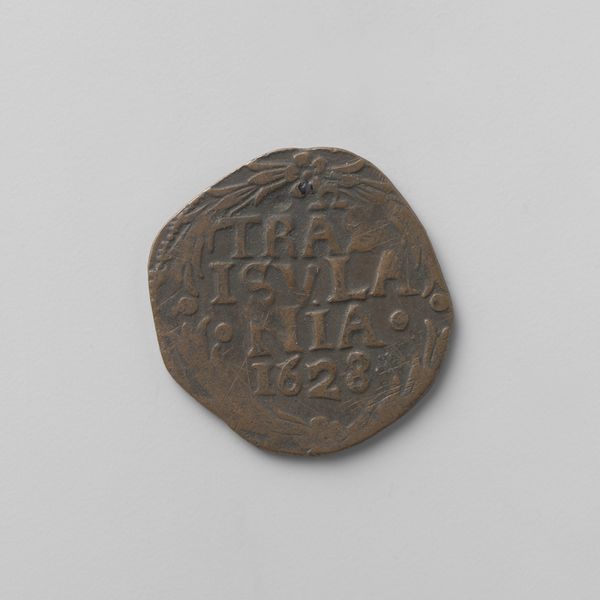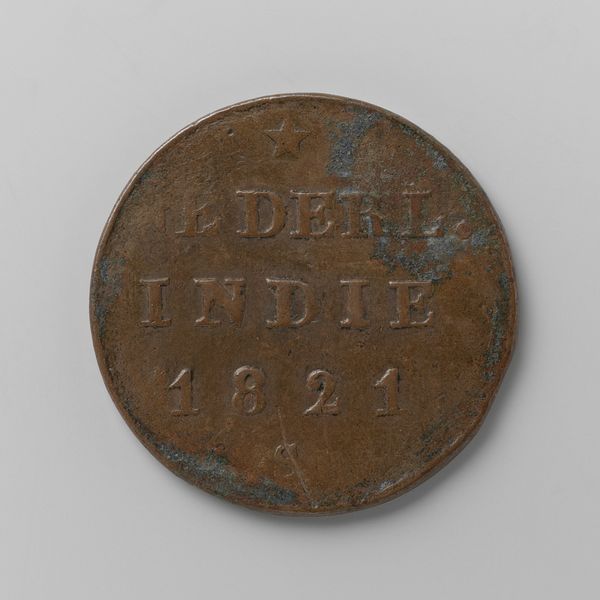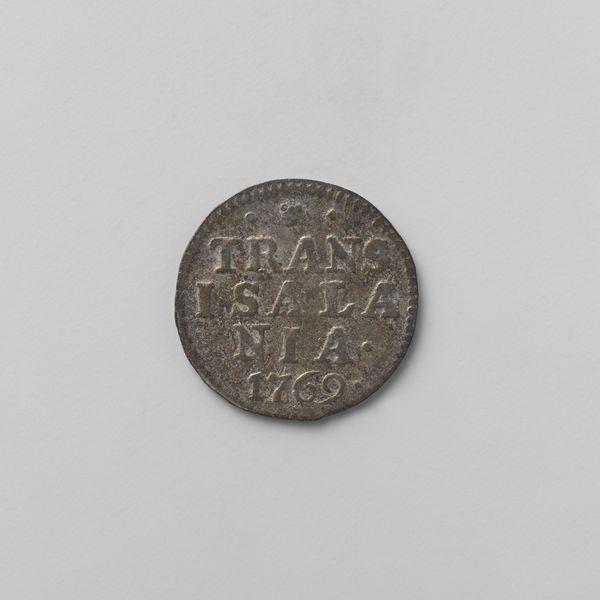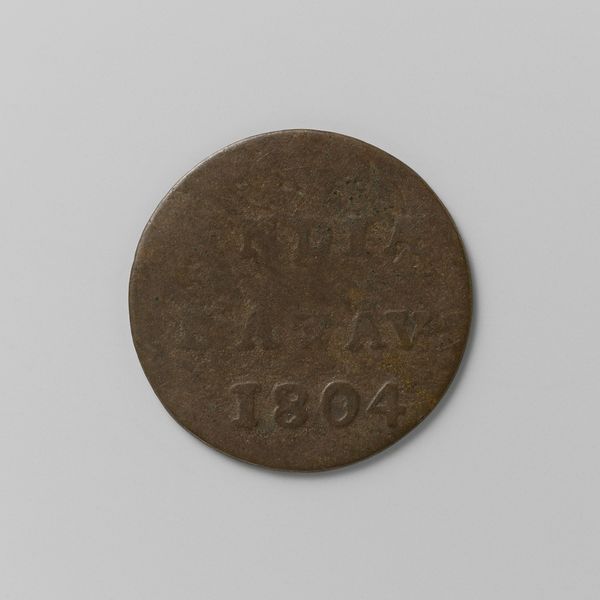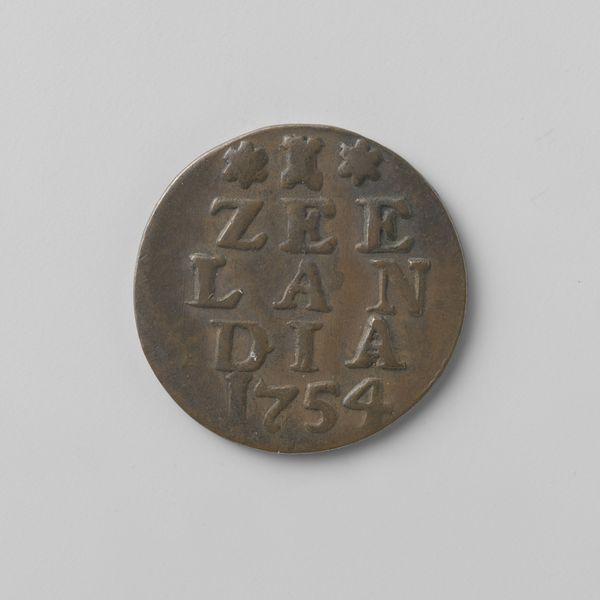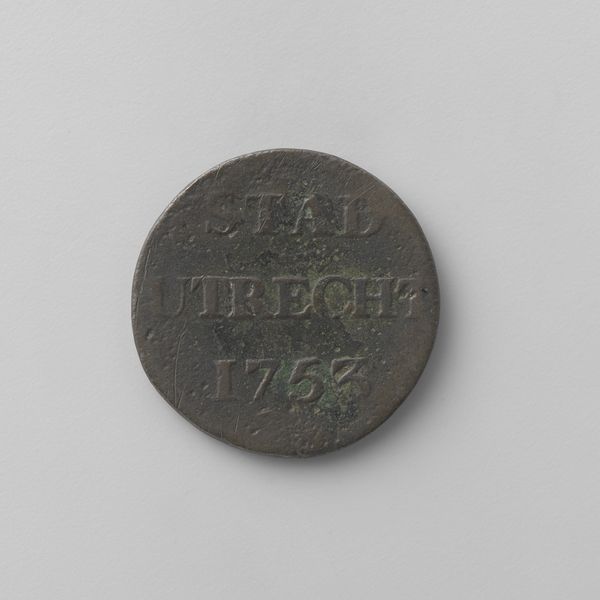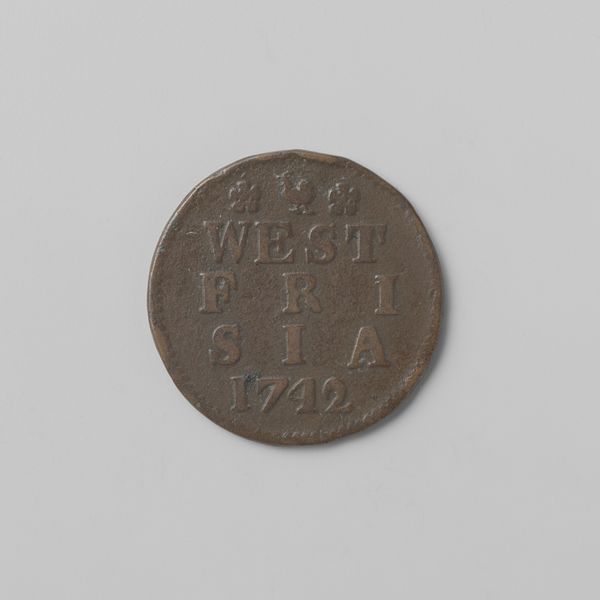
metal, bronze, engraving
#
dutch-golden-age
#
metal
#
bronze
#
geometric
#
orientalism
#
embossed
#
islamic-art
#
history-painting
#
coin
#
engraving
Dimensions: diameter 1.8 cm, weight 1.40 gr
Copyright: Rijks Museum: Open Domain
Editor: This is a bronze coin from 1818, a ½ Duit from the Dutch East Indies, currently held in the Rijksmuseum. The inscription is quite clear despite the coin’s age. How might we analyze this purely from its visual qualities? Curator: Indeed. Notice how the circular format immediately dictates the organization of the inscription. The words "INDIA BATAV." and the date, "1818," are stacked, creating a sense of balance. What do you observe about the texture and form of the lettering itself? Editor: The lettering looks deeply impressed. It creates a relief effect. Is that significant in numismatic art? Curator: Absolutely. The depth and clarity of the engraving contribute to the legibility and longevity of the inscription, crucial for a coin in circulation. The choice of bronze, too, its color and material presence, speaks to its functional durability. The circle itself is of significance. What does the geometry suggest? Editor: That's interesting! I see the perfect circle containing history, economics, and power... and that a larger context influenced these design choices! Curator: Precisely. It encapsulates a world of meaning within its form, which goes to show the symbiosis of pure design, function, and meaning! Editor: I learned about the inherent design in everyday functional art and that geometric choices are seldom random. Curator: And I see the power of such objects lies not only in functionality, but in their physical representation of cultural and political history.
Comments
No comments
Be the first to comment and join the conversation on the ultimate creative platform.
